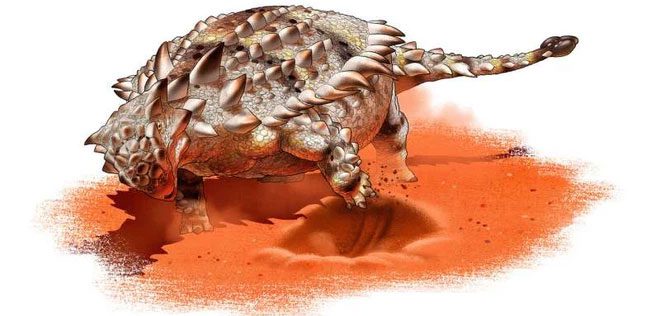The newly excavated skeleton of the Ankylosaurid – a large armored herbivorous dinosaur that lived during the Late Cretaceous period – may indicate that members of this dinosaur family were quite fond of digging, according to a study published in the journal Scientific Reports.
This specimen, known as MPC-D 100/1359, can help us gain further insights into the behavior of Ankylosaurids during the Late Cretaceous (84-72 million years ago).

Ankylosaurus with a club tail.
Yuong-Nam Lee and colleagues excavated fossilized bone fragments of specimen MPC-D 100/1359 from a mineral deposit in the Baruungoyot Formation in southern Gobi Desert, Mongolia, where it was discovered in the 1970s. The authors suggest that certain anatomical features of MPC-D 100/1359 may indicate that Ankylosaurids during this period had evolved and possessed several new behaviors compared to their predecessors.
The bones in its front section are arranged in a shallow arc, which may have aided its ability to dig through soft soil. The fusion of some vertebrae and the reduced number of bones in its hindquarters compared to other dinosaur species may have helped it dig or move its tail more gently. The body shape of MPC-D 100/1359 is broader in the middle but narrower at both the front and back, which may have helped keep its body straight while digging.
The authors speculate that MPC-D 100/1359 may have dug into the ground to access water, minerals, or plant roots for food and may have even curled up in shallow holes to protect its softer lower body from predators.




















































